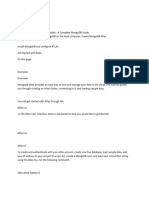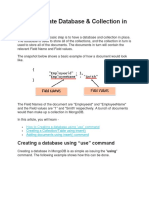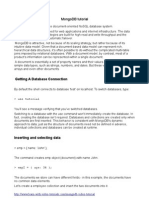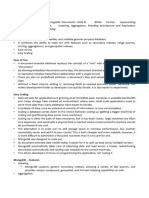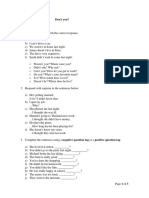0% found this document useful (0 votes)
27 views3 pagesMongodb Lab Manual
The document provides a guide on creating a database in MongoDB, a NoSQL document-based database that uses a flexible BSON format. It outlines the steps for setting up MongoDB, creating a database and collections, and performing update and delete operations on documents. Key commands for these operations are also included, demonstrating how to modify and remove documents from collections.
Uploaded by
kavithadurairaj1984Copyright
© © All Rights Reserved
We take content rights seriously. If you suspect this is your content, claim it here.
Available Formats
Download as DOCX, PDF, TXT or read online on Scribd
0% found this document useful (0 votes)
27 views3 pagesMongodb Lab Manual
The document provides a guide on creating a database in MongoDB, a NoSQL document-based database that uses a flexible BSON format. It outlines the steps for setting up MongoDB, creating a database and collections, and performing update and delete operations on documents. Key commands for these operations are also included, demonstrating how to modify and remove documents from collections.
Uploaded by
kavithadurairaj1984Copyright
© © All Rights Reserved
We take content rights seriously. If you suspect this is your content, claim it here.
Available Formats
Download as DOCX, PDF, TXT or read online on Scribd
/ 3
















